Faberge-Ei, herkunft, die Eier, auktion von einem Ei
Fabergé-Eier sind Schmuckstücke in Form von Ostereiern von Peter Carl Fabergé und seine Mitarbeiter zwischen 1885 und 1917 wurden von den russischen Zaren beauftragt, als Ostergeschenk dienen. Charakteristisch für die 52 Eier gemacht ist, dass sie alle einzigartig und dass sie aus edlen Materialien wie Gold, Platin und Edelsteinen. Nach der russischen Revolution werden die Eier über die ganze Welt verstreut: zehn Eier sind weg, sechzehn sind im Besitz von Einzelpersonen, fünf sind in der Hand von Queen Elizabeth II. von Großbritannien und eine große Anzahl von Eiern in verschiedenen Museen. Fabergé-Eier sind jetzt sehr teuer, und einige sind Millionen wert.
Ostern ist ein wichtiger Feiertag in Russland, wo es die Gewohnheit, sich gegenseitig zu geben. Geschenke Oft sind diese Eier waren schön eingerichtet, denn es symbolisiert Fruchtbarkeit. Im Jahre 1885 Zar Alexander III gab an seine Frau, Maria Fjodorowna die Zarin. Worden Juwelier Fabergé in Auftrag ein Osterei So wurde beispielsweise die erste Fabergé-Ei geboren: der "Henne-Ei". Die Kaiserin war so erfreut über das Geschenk, das der Zar ernannt Fabergé mit Bestellungen zu machen Hofjuwelier. Ein neues Ei jedes Jahr Die Bedingungen waren, dass jedes Ei muss eindeutig sein und sollte vorzugsweise Themen haben. Faberge erhielt auch eine freie Hand und sogar der Zar wusste, wie es nächste Ei zu suchen. Wenn er informiert werden wollte die Antwort war immer: "Eure Majestät werden zufrieden sein." Nach dem Tod von Alexander III im Jahr 1894 legte die neue Zar Nikolaus II., die Tradition, aber aus diesem Jahr wurden zwei Eier pro Jahr bestellt; ein für seine Frau, der Zarin Alexandra Fjodorowna und eine für seine Mutter, der Kaiserin-Witwe. In 1904 und 1905 gab es keine Eier wegen des russisch-japanischen Krieges gemacht.
Niederländische Übersetzung durch separate Beschreibung
Geschenk von Alexander III an Maria Fjodorowna 1885-1894
- 1885 Erste Henne-Ei
- 1886 Henne-Ei mit Saphiranhänger
- 1887 blaue Schlange Clock Egg
- 1888 Engel mit Chariot Egg
- Nécessaire 1889 Egg / Perle Egg
- 1890 Dänische Schlösser Egg
- 1891 Memory of Azova Egg
- 1892 Diamant Trellis Egg
- 1893 Egg Kaukasus
- 1894 Renaissance Egg
Geschenk vom Nikolaus II. an Alexandra Feodorowna 1895-1917
- 1895 Rosebud Egg
- 1896 Egg wih Revolving Miniaturen
- 1897 Coronation Egg
- 1898 Maiglöckchen-Ei
- 1899 Weiße Lilie Glocke
- 1900 Trans-Siberian Railway Egg
- 1901 Blumen-Ei-Korb
- 1902 Clover Leaf Egg
- Peter der Große 1903 Egg
- 1906 Moskauer Kreml Ei
- 1907 Rosen-Gitter Egg
- 1908 Alexander Palace Egg
- 1909 Standart Ei
- 1910 Colonnade Egg
- 1911 15. Jahrestag Egg
- 1912 Egg Zarewitsch
- 1913 Romanov Tercentenary Egg
- 1914 Mosaik-Ei
- 1915 Rot-Kreuz-Triptychon Egg
- 1916 Stahlmilitär Egg
- 1917 Blau Zarewitsch Constellation Egg
Geschenk vom Nikolaus II. an Maria Fjodorowna 1895-1917
- 1895 Zwölf Monogrammenei
- 1896 Alexander III Portraits Egg
- Mauve 1897 Egg
- Pelikan 1898 Egg
- 1899 Pansy Egg
- 1900 Kuckucksuhr Egg
- 1901 Gatschina, Schloß Egg
- 1902 Alexander III Medallion Egg
- 1903 Royal Danish Egg
- 1906 Swan Egg
- 1907 Liebes-Trophäen Egg
- 1908 Peacock Egg
- 1909 Alexander III Gedenk Egg
- 1910 Alexander III Reit Egg
- 1911 Bay Tree Egg
- 1912 napoleonischen Egg
- 1913 Winter-Ei
- Katharina die Große 1914 Egg / Grisaille Egg / Pink Cameo Egg
- 1915 Rot-Kreuz-Portraits Egg
- 1916 Orden des Heiligen George Egg
- 1917 Birch Egg
Auktion von einem Ei
Rothschild ist nicht ein Faberge-Ei. Seit 28. November 2007 Es war an diesem Tag für die bei Christies in London versteigert fast 9.000.000 £. Die Existenz dieses Ei war bis vor kurzem nur seinem Besitzer bekannt. Dies ist der alte Rekord von 2 Millionen Pfund aus.
Faberge eier liste





Die Idee, dass manche Steine Edelsteine und andere nur Halbedelsteine sind, ist jedem Käufer von farbigen Steinen geläufig. Edelsteine – Diamant, Rubin, Saphir und Smaragd – stehen der Tradition nach infolge ihrer außerordentlichen Farbe, ihres Glanzes und ihrer extremen Seltenheit auf dem Markt hoch im Preis.
Während Edelsteine sich ihren Ruhm verdienen, ist der konventionelle Unterschied zwischen Edelsteinen und Halbedelsteinen mit Mythen und irrtümlichen Annahmen behaftet. Wir werden hier versuchen, zwischen einigen dieser Mythen und der Wirklichkeit zu unterscheiden.
Es wird oft irrtümlich angenommen, dass der Unterschied zwischen Edelsteinen und Halbedelsteinen von Jahrhunderte alter Tradition bestimmt werde. In Wirklichkeit ist er jedoch eine Neuerung, die nur auf das neunzehnte Jahrhundert zurückgeht. Der Begriff Halbedelstein mit der Bedeutung „von geringerem Handelswert als ein Edelstein“ lässt sich nur auf 1858 zurückverfolgen.

Eine weitere irrtümliche Annahme ist, dass die Liste der vier Edelsteine eine lange Geschichte hat. Die traditionelle Liste der Edelsteine ist jedoch eher länger und umfasst einige überraschende Steine. Perlen, obzwar genau genommen keine Edelsteine, wurden als Edelsteine betrachtet; desgleichen Opal. Aber einer der wichtigsten traditionellen Edelsteine, mit einer Geschichte, die auf das griechische Altertum zurückgeht, war der Amethyst. Der Amethyst wurde in die Klasse der Halbedelsteine aufgenommen, als in der ersten Hälfte des neunzehnten Jahrhunderts große Vorkommen in Brasilien und Uruguay gefunden wurden. Die Einführung des Begriffs „Halbedelstein“ in das englische Lexikon fällt mit den neuen Amethyst-Entdeckungen zusammen.
Unter den Edelsteinen ist der Diamant mit den meisten Mythen behaftet. Interessant ist jedoch, dass diese modern sind und nicht aus alten Zeiten stammen. Historisch gesehen wurden farbige Edelsteine wie Rubin und Saphir höher eingeschätzt als Diamant, hauptsächlich weil Diamant nicht besonders selten war. Aber im zwanzigsten Jahrhundert änderte sich das. Das erste Ereignis war der Fund einer noch reichlicheren Quelle von Diamanten der Schmuckqualität in Südafrika. Zur gleichen Zeit stieg der Wahrnehmungswert von Diamanten auf eine Ebene, auf welcher man mit Recht sagen kann, dass er in den Augen der Käufer an der Spitze der Liste der Edelsteine steht. Was ist geschehen? Liegt der Wert von Edelsteinen nicht in erster Linie in ihrer Seltenheit?

Im 19. Jahrhundert wurden auf der ganzen Welt nur einige wenige Pfunde Diamanten pro Jahr gewonnen. Nach der Entdeckung der riesigen Diamantbergwerke in Sädafrika im Jahr 1870 grub man Diamanten einfach tonnenweise aus. Das Angebot war so groß und die Nachfrage so gering, dass britische Finanziere in den südafrikanischen Bergwerken Gefahr liefen, ihre Investition zu verlieren. Die Lösung war die Gründung des mächtigen De Beers-Kartells, das auch heute noch die weltweite Diamantenproduktion und das weltweite Diamantenangebot regelt. Qualitätsdiamanten sind eigentlich nicht selten. Aber De Beers bestimmt, wie viele auf den Markt kommen, und das hält die Preise hoch.
Das Be Beers-Konsortion leitete auch einen Jahrzehnte langen Werbefeldzug ein, um Diamanten mit Liebe, Brautwerbung und Hochzeiten in Verbindung zu bringen, unter dem heute bekannten Slogan „Diamanten sind für ewig“. Der Verlobungsdiamant, einst unbekannt in den meisten Teilen der Welt (einschließlich Europas), gilt jetzt als Wesensbestandteil des Heiratsrituals. Der Schluss, dass die Sonderposition des Diamanten als Edelstein zum Großteil dem Monopol und der Sozialtechnik zu verdanken ist, lässt sich nur schwer vermeiden.

Heute können diverse „Halbedelsteine“, wie zum Beispiel Alexandrit, Demantoid-Granat, Tsavorit-Granat und Tanzanit so teuer sein wie Rubin und Saphir. Feine größere Turmalin-, Spinell- und Aquamarin-Steine stehen ebenfalls auf dem Markt hoch im Preis. Man kann sagen, dass wir jetzt eine Situation erreicht haben, in der der Unterschied zwischen Edelsteinen und Halbedelsteinen seine Bedeutung verloren hat. Die Federal Trade Commission der US überlegt sich gelegentlich das Verbot dieser Begriffe, um die Verwirrung der Kunden zu vermeiden. Die American Gem Trade Association (AGTA) hat bereits den folgenden Satz in ihren Moralkodex aufgenommen: „Mitglieder sollten bei der Beschreibung von Edelsteinen den Begriff „Halbedelstein“ vermeiden.“
- Erstausgabe: October-16-2007
- Zuletzt geändert: February-22-2011
- © 2005-2017 GemSelect.com alle Rechte vorbehalten.
Nachdruck (Text oder Grafik) ohne die ausdrückliche, schriftliche Zustimmung von GemSelect.com (SETT Company Ltd) ist streng verboten.
-
Wer sind Wir?
- Über uns
- Kundenbewertungen
-
Richtlinien
- Versandkosten
- Rückgabe
-
Informationen
- Informationen zu Schmucksteinen
- Übersicht
Nachdruck (Text oder Grafik) ohne die ausdrückliche, schriftliche Zustimmung von GemSelect.com (SETT Company Ltd) ist streng verboten.
USA & Canada only:
Gems are always measured in Millimeter (mm)
Dimensions are given as;
length x width x depth,
except for round stones which are;
diameter x depth
Select gems by size, not by weight!

Green login-bar will show on the bottom when the account is ready
Close window to continue
Facebook did not provide your email to login.
Please allow Facebook to provide your email or sign up an account with GemSelect.
Faberge Imperial Easter Egg Packing Cases Print, Russian Eggs, Russian Artwork, Russian Print, Faberge Eggs, Vintage Wall Art, Wall Decor
Нравится эта вещь?

Peter Carl Fabergé, also known as "Karl Gustavovich Fabergé", (May 30, 1846 – September 24, 1920), was a Russian jeweller, best known for the famous Fabergé eggs, made in the style of genuine Easter eggs, but using precious metals and gemstones rather than more mundane materials.
Your giclee print will be created using archival, fade-resistant, pigment inks, heavyweight, museum-quality paper and a 9-color process fine-art printer to ensure the most vivid, detailed and long-lasting print. To prevent fading, as with all prints, please never expose them to direct sunlight. To protect your investment, we recommend that you mat and frame your prints.
This giclee print is offered in the most popular sizes to make matting and framing a breeze with your local retailer. The print you will receive will measure exactly the dimensions you ordered. It is designed in such a manner that all of the main image will fit well within the standard mat that comes with frames that you can purchase at many retail stores.
All of our prints are carefully positioned with an approximate half inch border on all sides for matting and framing, although this may vary slightly based on the size of print you order and the size of the original image. If you would like a different size border, or need to know the exact border size, or a borderless print, just let me know in the "Notes To Seller" when you place your order.
Select the PRINT SIZE for your needs, then add the mat dimensions to the print size to determine what your final frame size should be. When you plan to mat a print, the rule of thumb is to order your PRINT SIZE one size smaller than your frame size--this allows for the addition of the mat of your choosing. For a statement wall, bigger is better, both with the print size, and the frame size.
The 5" x 7" FRAME size is a very popular size because they are the perfect size to display on a desktop at work, home, or, make an excellent gift choice
I ship worldwide in 1-2 business days after receiving your payment. Your prints are protected with Glassine wrapping and shipped in a rigid "Do Not Bend" mailer to ensure it arrives in the same condition as when it was shipped, and for larger sizes, we ship in a sturdy cardboard tube. Your print will arrive safely, or I will replace it.
"Great care and detail was taken to get this delivered in perfect condition. Seller is very professional. Thank you!"
Peter Carl Fabergé, also known as "Karl Gustavovich Fabergé", (May 30, 1846 – September 24, 1920), was a Russian jeweller, best known for the famous Fabergé eggs, made in the style of genuine Easter eggs, but using precious metals and gemstones rather than more mundane materials.
Your giclee print will be created using archival, fade-resistant, pigment inks, heavyweight, museum-quality paper and a 9-color process fine-art printer to ensure the most vivid, detailed and long-lasting print. To prevent fading, as with all prints, please never expose them to direct sunlight. To protect your investment, we recommend that you mat and frame your prints.
This giclee print is offered in the most popular sizes to make matting and framing a breeze with your local retailer. The print you will receive will measure exactly the dimensions you ordered. It is designed in such a manner that all of the main image will fit well within the standard mat that comes with frames that you can purchase at many retail stores.
All of our prints are carefully positioned with an approximate half inch border on all sides for matting and framing, although this may vary slightly based on the size of print you order and the size of the original image. If you would like a different size border, or need to know the exact border size, or a borderless print, just let me know in the "Notes To Seller" when you place your order.
Select the PRINT SIZE for your needs, then add the mat dimensions to the print size to determine what your final frame size should be. When you plan to mat a print, the rule of thumb is to order your PRINT SIZE one size smaller than your frame size--this allows for the addition of the mat of your choosing. For a statement wall, bigger is better, both with the print size, and the frame size.
The 5" x 7" FRAME size is a very popular size because they are the perfect size to display on a desktop at work, home, or, make an excellent gift choice
I ship worldwide in 1-2 business days after receiving your payment. Your prints are protected with Glassine wrapping and shipped in a rigid "Do Not Bend" mailer to ensure it arrives in the same condition as when it was shipped, and for larger sizes, we ship in a sturdy cardboard tube. Your print will arrive safely, or I will replace it.
"Great care and detail was taken to get this delivered in perfect condition. Seller is very professional. Thank you!"
![]()

![]()

![]()

![]()

Reviews aren’t loading right now. Try again later!
Принимаются подарочные сертификаты Etsy
- Money Order
- Check
- Other Method
Returns & exchanges
- Custom or personalized orders
Seller Details
5835 Dewey Street
CHEVERLY, MD 20785
Познакомьтесь с владельцем магазина ThePreciousPast.

Faberge Imperial Easter Egg Packing Cases Print, Russian Eggs, Russian Artwork, Russian Print, Faberge Eggs, Vintage Wall Art, Wall Decor
- Предметы ручной работы
- Материалы: Digital Design, Pigment Inks, Archival Paper, Acid Free Paper, Lignin Free Paper, Fade Resistant Inks, Archival Certificate, TAP ITEM DETAILS FOR COMPLETE DESCRIPTION
- Сделано на заказ
- Фидбэк: 113 отзывов
- Favorited by: 333 people
- View shop policies
- Gift message available
Этот магазин принимает подарочные сертификаты Etsy.
Please enter a valid zip code

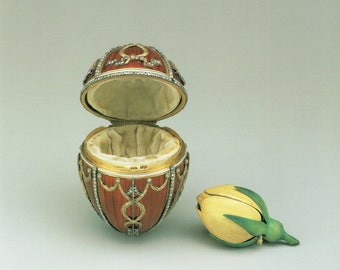
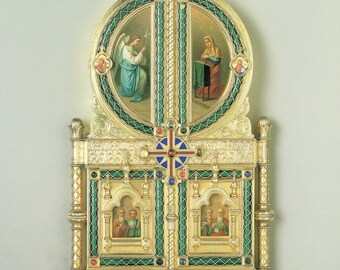
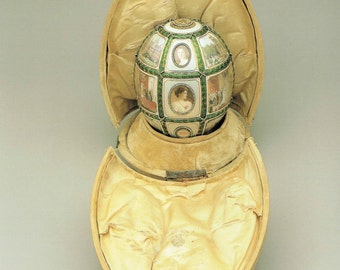
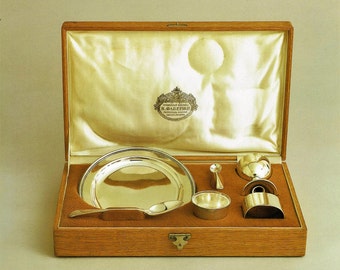
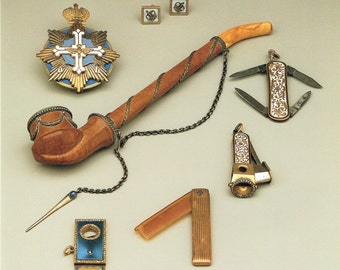
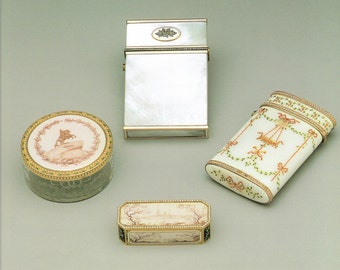
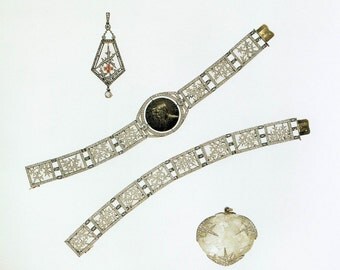
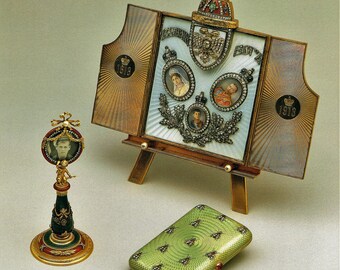
Относящееся к этому изделию
- Выставлено на продажу 03 сен 2017 r
- Добавлено в избранное: 333
- Информация о продавце
Отправить Кому
Стоимость доставки
About
Follow Etsy
Нужна помощь? Обратитесь в центр помощи
Германия Русский € (EUR)
Start typing the name of a page. Hit ESC to close, Enter to select the first result.
Faberge eier liste
Simply select the country you would like to deliver to and the currency you would like to shop in.
Don’t have an account?
Terms & Conditions
Fabergé Terms and Conditions of Sale
These Terms and Conditions apply to all sales made on our web site or in our company stores (currently in London, New York and Geneva). Unless we tell you otherwise, they do not apply to any purchases you make from Authorised Fabergé Retailers or other outlets - those retailers will have their own terms and conditions of sale.
The particular Fabergé entity you contract with to sell your purchase to you varies depending on how and where you purchase your items. In all instances, we will refer to this party as “Fabergé”, or “us” or “we” etc in this agreement.
If you purchase your items ONLINE or at our LONDON store, the seller is Fabergé (UK) Limited, whose registered office is 23 King Street, London SW1Y 6QY.
If you purchase your items from our GENEVA store, the seller is Fabergé Suisse S.A., whose registered address is Grand Hotel Kempinski Arcades, Quai du Mont-Blanc 19, 1201 Genève, Switzerland.
If you purchase your items from our NEW YORK store, the seller is Fabergé Inc, whose registered address is 2711 Centreville Road, Suite 400, Wilmington 19808, Delaware, USA.
In general, to contact us, you should do so at sales@faberge.com
2 Eligibility and Personal Details
By placing an order with us you must be legally capable of entering into a contract with us. This normally includes being at least 18 years of age.
You confirm that the information you provide about yourself is true, accurate and complete and that you are the person referred to in the billing information. If any information changes, you should advise us straight away.
For online sales, you promise to keep your login details secure and not give them to anybody else. You must notify us immediately if you think there has been a breach of security or unauthorised use of your account.
We do not guarantee that you will be able to make online purchases in all countries, or that we will accept all payment cards.
By making an offer (asking) to purchase merchandise from us you authorise us to carry out credit checks, to transmit or obtain information about you to or from third parties in any jurisdiction, to authenticate your identity, and to process your personal information to complete the transaction. See our Privacy Policy for how we may use your personal information.
3 How the Contract for Sale is Formed
ALL OFFERS TO BUY OR SELL MERCHANDISE ARE CONDITIONAL ON THE MERCHANDISE BEING AVAILABLE FOR SALE AT THE TIME OF INTENDED DELIVERY.
If you are purchasing IN-STORE, the contract to purchase is formed when you agree with our sales assistant to purchase a particular item, even if you don’t pay for it right then. Simply asking to see an item that is not in stock does not create a contract to buy it. Paying a deposit would be taken as evidence of a contract to buy the item. If you subsequently change your mind, depending on applicable law and subject to our cancellation and returns policy, we do not have to refund your deposit or purchase price.
If you ask us to make a personalised item or some other item especially for you then our agreement to make it and part payment by you will create the contract. From that point on you will be liable for the full contract price. We do not accept cancellations or returns on personalised items or items made especially for you.
For ONLINE contracts, your order constitutes an offer to Fabergé that you will buy the merchandise. All orders are subject to acceptance by us. Our online sales procedure is intended to make available for sale only those items we have in stock and items for delivery to countries in the drop down menu. If there is any discrepancy between the sales procedure and these terms and conditions of sale, these terms and conditions take precedence. Not all items advertised on our web site are available for sale online. Items in your shopping basket are not necessarily secure and may be purchased by other customers. We will confirm receipt of your order (Order Confirmation Receipt) but the contract will not be formed until we have checked availability and actually despatched the order to you. We will send you a Despatch Confirmation when the order has been despatched to you. The Despatch Confirmation serves to confirm that the contract has been formed and also advises you of the delivery details.
If you do not receive an Order Confirmation Receipt within 5 hours of placing your order, or you do not receive a Despatch Confirmation within 5 days of placing your order, you should contact our online sales staff at sales@faberge.com.
Ownership of any items you have agreed to buy from us will pass to you at the latter of the time you take delivery of the items or the time you pay for them in full. We do not normally give customers items “on approval” or allow them to take possession of merchandise before it is paid for in full. On the rare occasion that we might allow customers to take possession of goods before they are paid for, the customer will be fully responsible for the merchandise after they have taken possession of it, and if it is lost or damaged, the customer will have to pay for it.
4 Price, Taxes, Payment and Delivery
For IN-STORE purchases, the price you actually pay will include any taxes applicable in that jurisdiction. However, in some countries, for example the USA, the displayed or advertised price may not include sales tax which will be added at the time of purchase. You may be entitled to refunds from Customs when leaving a jurisdiction where you bought an item if you are permanently exporting the item. You may also be liable for customs duty or tax for items imported into another jurisdiction. If you are exporting an item you should check the tax implications with the authorities in the country of your intended destination.
For ONLINE purchases, the prices displayed on our website for online sales depend on the country the goods will be delivered to, and for the countries in the drop down menu, the quoted price is the “delivered price” (i.e. includes taxes, insurance, shipping). If you want delivery to a country not on the drop down menu, please contact sales@faberge.com. For deliveries to New York State, NY State Sales Tax will be added to the “delivered price”.
We try to ensure that all our advertised prices are accurate, but errors may sometimes occur. If we discover an error in the price of an advertised item or an item you have ordered, we will contact you as soon as possible. You will have an option to reconfirm your order at the correct price or to cancel it.
You may pay for your merchandise by credit card, debit card or bank transfer. If you are buying in-store you may be able to pay with cash but local stores will have to comply with local money laundering and other legislation which may restrict the amount of cash we are allowed to accept. All debit and credit card holders are subject to validation checks and if the issuer of your card refuses to authorise payment, we will not be liable for any delay or non-delivery.
For online sales we will arrange for delivery to the delivery address but we and our agents reserve the right to delay or decline delivery to any address for security or other reasons. If delivery cannot be made at your chosen address, we will ask you to provide an alternative address.
We take reasonable care to keep details of your order and payment secure but third parties are necessarily involved in processing your card information. In the absence of negligence by Fabergé, we will not be liable for any loss you suffer for unauthorised access to any data you provide us when ordering from our web site or in-store.
If you buy ONLINE, many jurisdictions give you the right to cancel your order and return items for a short period after you have received them. In the European Union this period is 14 days. Where you bought online, we will honour any such period which is effective in the jurisdiction we delivered your merchandise to. In order to cancel your online order under applicable law, you must write to us at our London address or email us at sales@faberge.com, using the subject heading “Cancellation of Sale in Cooling Off Period.” If you cancel under applicable law (where it is available) we will give you a full refund. You must return the full order to us at our London address at your cost, you must arrange for its insurance at the price you paid for it, and the items must be returned unused and in their original condition and with original packaging and certificates. Except where otherwise required by applicable law, we will not accept items returned if they are used or damaged or returned without their original packaging, or if the sale was not an online sale or if the item was specially made or personalised for you.
In some jurisdictions you may be entitled to cancel online orders if they are not delivered to you within a defined or reasonable time from placing your order, and you have not agreed to a specific delivery date. In the European Union, the defined period is 30 days (unless you have agreed something else with us). We will try to get your order to you as soon as possible and we will honour any law applicable in the jurisdiction the merchandise is intended to be delivered to, that gives you the right to cancel for delayed delivery. If you wish to cancel under this law you should write to us at our London address or email us at sales@faberge.com using the heading “Cancellation of Sale for Non Delivery.” If you cancel under this law (where it is available) we will give you a full refund.
In addition to the legal rights provided in some jurisdictions to cancel your contract for sale (as above), we also offer all customers, both online and in-store, the opportunity to return unwanted items to us for store credit or exchange within 30 days of delivery of the items. The items must be returned within 30 days to the store where you purchased them, or to our London address if you purchased online, and they must be returned unused and in their original condition, with original packaging and certificates. We will exchange or give you a store credit note for returned items (at your option) to the price you paid for the item subject to any special conditions of sale. Items that have been specially made for you and personalised items cannot be returned under this policy. You must use the credit note at the same store (or online) you purchased the item from and you must use it within 12 months of the original purchase. We cannot give a cash refund for any part of your store credit but you can use it to purchase any available items. We will normally refund tax and duty on the item too, but we cannot do this for items purchased on the web site and you will have to take responsibility yourself for claiming refunds if they are available in your jurisdiction. You must arrange and pay for all insurance, post and packaging costs if you return goods under this policy.
Where appropriate we will resize rings, free of charge within 90 days of purchase, but resizing will not always be possible. We will treat your request sympathetically, but we reserve the right to offer this service completely at our discretion.
We offer a lifetime warranty to our customers against manufacturing defects in all jewellery and objets we sell. For watches, the warranty is for three years from the date of purchase. This means that if a manufacturing defect becomes apparent during the guarantee period in any of those items we sell you, we will fix the defect (where reasonably possible) at no cost to you. If we cannot fix the manufacturing defect at a reasonable cost we will discuss some other form of compensation with you. This warranty covers gifts you buy for others and give to them within one year of purchase, but it does not extend to any other disposition of the product. Of course, you must take good care of the product, comply with any care recommendations we suggest and if the item requires servicing, then it must be serviced regularly. You must be able to provide proof that you bought the item from us.
You should always ensure you have insurance to cover loss of stones or other accidental loss or damage to any item. We will not be liable for loss of or damage to stones under this warranty, or for any indirect loss you suffer due to a manufacturing defect in any item you have purchased from us.
This warranty does not affect any legal rights you may have if you have been supplied with faulty goods.
If your item is damaged in an accident or by normal wear and tear, please contact our sales team at sales@faberge.com and we will try to provide a quote for repair where possible.
We may change these terms and conditions at any time but once you have purchased an item, the terms and conditions current at the time of your purchase will apply.
If any of these terms and conditions is invalid or unenforceable, the remainder will continue to have full force and effect.
These terms and conditions will not be binding on our assignees or successors unless they adopt these terms and conditions or they are affiliated with Fabergé.
If we breach these terms and conditions we will be liable only for your direct losses and the reasonably foreseeable consequences of our breach.
Our liability is limited to the price you paid for the goods purchased from us.
We will not be responsible to you for any delay or failure to comply with our obligations if the delay or failure arises from any cause beyond our reasonable control.
We do not seek to limit our liability for death or personal injury arising from our negligence, or to exclude liability for fraudulent misrepresentation by ourselves or our agents.
Orders placed in the U.S. are subject to the law of the State of New York, excluding principles of conflicts of law, and all disputes regarding deliveries to U.S. addresses shall be resolved in the courts located in New York, New York.
Privacy Policy
We appreciate that protection of your privacy is very important to you. Accordingly, the Fabergé group will only use personal information you give us for strictly limited purposes. Your personal information includes details like your name, email addresses, physical addresses, phone numbers. We do not hold or transmit your credit card details. These are held directly by WorldPay, our payment service provider. We will hold and use your personal data only for authorised purposes such as dealing with any enquiries you make to us, including registering you as a user on our web site if you request it, carrying out appropriate credit or identity checks if you want to buy something from us, processing your order, delivering your purchases to you. We may pass your data on to third parties in different jurisdictions for these purposes.
We will not pass your personal information on to parties outside the Fabergé group for marketing purposes, but we may use it for our own marketing and in offering you our products and services, or inviting you to events. This may mean your personal information is passed to a Fabergé group company outside the jurisdiction where you live. You will of course be entitled to opt out of receiving our marketing information if you wish.
We and our service providers collate statistical information about website traffic, sales and other commercial information, but these statistics are not passed to other parties.
Our website uses cookies (a cookie is a piece of software that is stored on your computer or mobile device by your web browser which allows the website to remember your preferences). Most browsers are automatically set to accept cookies but usually you can alter the settings of your browser to prevent automatic acceptance. If you chose not to accept cookies, you will still be able to use most of the features on our website. However, if you do experience any problems or questions then please contact us at info@faberge.com.
Please note that we may disclose your personal data to regulatory or other bodies in order to comply with any legal obligation. This may include exchanging information with other organisations for the purpose of fraud prevention.
By giving us your personal information, you promise that the personal data you give us is accurate, that you will let us know if it changes, and you agree that we may hold and use your data for the purposes set out above and any other lawful purpose.
This Policy reflects Fabergé’s current practices but may be changed and updated. The last update will be noted at the end of this Policy.
You may ask Fabergé for access to or to correct, update or delete information about you by contacting our team at info@faberge.com.
CONDITIONS OF USE OF OUR WEB SITE
This website is owned and operated by Fabergé (UK) Limited which has its registered office at 23 King Street, London SW1Y 6QY, United Kingdom.
If you do not wish to accept these terms and conditions of use of our website, you should not use our website. By using our website, you agree to these terms and conditions of use. We may revise these terms- if we do the latest date of update will be noted at the end of these terms.
1 Intellectual Property Rights
The Fabergé group is the owner or licensee of the intellectual property rights (designs, images, graphics, photographs, sounds, videos, copyright, trademarks etc) in the website and any material published on it. This material, including the design of any items featured on the website, is protected by intellectual property laws around the world.
Nothing on this website or any material displayed on it (including the design of any items featured) may be copied, reproduced, adapted, downloaded, distributed, or used or exploited in any way, in whole or in part, without the prior express written permission of Fabergé. This is an important term for us and Fabergé is vigilant in protecting its intellectual property rights.
You may link to our website but you must link to our home page so that users of your site do not think we are associated or connected to you. When sites do link to our website, or when we link to other sites, we are not responsible for the content on the other sites or any use you make of those sites. Those sites will have their own terms and conditions of use.
3 No Commercial Use
You are permitted to print one copy of any of the pages from our website for your own personal, non-commercial reference. You may not copy, adapt, publish, transmit, generate advertising, or use or exploit the site in any other way.
4 Accuracy of Information on this Website
We have taken care to ensure that information and material on this site is accurate but we make no representation and give no guarantee that it meets any particular standard of reliability or accuracy. It is provided free of charge for your own personal information. The information is not intended for business or academic use.
5 Limitation of our Liability
To the maximum extent permissible by law, we expressly exclude liability for any direct, indirect, special or consequential damages, whether in contract, negligence or otherwise, arising out of your or anyone else’s use of this website or the reliance of information on it.
If we are held liable by a court of competent jurisdiction for any loss you suffer as a result of your use of, or inability to use, this website, or use of any information on it, you agree that the maximum liability to the Fabergé group of companies, is GBP 5,000.
Nothing in this section limits or excludes the liability of the Fabergé group of companies for death or personal injury arising from our negligence, nor our liability for fraud or fraudulent misrepresentation, nor any other liability which cannot be excluded or limited by law.
6 Governing Law and Jurisdiction.
These terms and conditions of use are governed by the laws of England and you agree to the exclusive jurisdiction of the English courts irrespective of where you live or access our website.
updated on 18/01/2016
Cookie Policy
A new law on cookies demands that you, as a website user, are given the opportunity to understand how cookies are used on our websites and consent to cookies being stored on your computer (laptop/mobile/tablet).
A cookie is a small text file, typically of letters and numbers, downloaded to your computer when you access websites. Typically, they contain the following information: a site name and unique user ID, the duration of the cookie's abilities and effects, and a random number. As a rule, cookies cannot be used to reveal your identity or personally identifying information.
When you visit a website that uses cookies for the first time, a cookie is downloaded onto your computer. The next time you visit that website, your computer checks to see if it has a cookie that is relevant and sends the information contained in that cookie back to the website. The website then notes that you have been there before, and in some cases, tailors what pops up on screen to take account of that fact. They also might record how long you spend on each page on a site, what links you click, even your preferences for page layouts and colour schemes.
Generally, the role of cookies is beneficial, making your interaction with frequently-visited sites smoother with no extra effort on your part. Without cookies, online shopping would be much harder. Without cookies, some websites will become less interactive with the cookie option turned off.
These cookies expire when you close your web browser (Internet Explorer, Firefox, Safari, Google Chrome). These cookies are used for various reasons, for example, remembering what you have put in your shopping basket as you browse a website. They can also be used for security to access your Internet banking or email.
These cookies are still stored on your computer after you have closed your web browser which allows your preferences on websites to be remembered. These cookies are used for a variety of purposes, for example, remembering your preferences on a website (your language choice or your user name on a particular website).
This refers to the website placing the cookie. First party cookies are cookies set by the website you are visiting. Third party cookies are set by another website; the website you are visiting may have advertising on the page and this other website will be able to set a cookie on your computer. Third party cookies on the main web browsers allow third party cookies by default. Changing the settings on your browsers can prevent this.
There are some exemptions to the above where it is essential for a website to store information on your computer, for example, to provide a service to you that you have requested.
- We use cookies to improve your experience on our websites and for functionality purposes, for example, if you choose to buy any of our products, we place a cookie on your computer to remember the currency that you have selected so next time you visit our website we can display the correct currency to you;
- We also use cookies to understand your usage of our website;
- Most web browsers (Internet Explorer, Chrome, Safari, Firefox, etc.) are configured to automatically accept cookies. However, most web browsers allow some control of most cookies through the browser settings, including the disabling of cookies at any time, etc.
For Opera: http://help.opera.com/Windows/10.20/en/cookies.html
login or Register now and create your Wishlist
Fabergé-Ei auf Flohmarkt gefunden
Verschollenes Fabergé-Ei Der Schatz des Schrotthändlers
Ein amerikanischer Schrotthändler hat den Fund seines Lebens gemacht: In der Annahme, er könnte mit dem Kauf eines Eis einen kleinen Gewinn erzielen, schlug er auf einem Antiquitätenmarkt zu - jetzt entpuppte sich das Stück als eines der acht verschollenen Fabergé-Eier.
London - Mit diesem ungewöhnlichen Fund hatte ein amerikanischer Schrotthändler im mittleren Westen der USA sicher nicht gerechnet. Für umgerechnet 10.000 Euro kaufte er auf einem Antiquitätenmarkt ein aufwendig verziertes Ei. Mit dem Weiterverkauf des Goldes aus dem Inneren des Stücks hoffte er, einen kleinen Gewinn erzielen zu können.
Als er zu Hause im Internet auf einen Artikel über ein kaiserliches Fabergé-Ei stieß, dämmerte ihm, was für einen Fund er da gemacht haben könnte. Er wandte sich an die Fabergé-Expertin Kieran McCarthy des Londoner Juwelierhauses Wartski. Und tatsächlich: Sie konnte die Echtheit des Eis bestätigen.
"In der Sekunde, als ich es sah, lief mir ein Schauer den Rücken runter", sagte die Expertin, die sich auf russische Kunst spezialisiert hat. Für Sammler sei dieses Ei der "Heilige Gral". Wartski vermittelte das Ei zum Verkauf an einen Sammler weiter. Der Verkaufspreis wurde nicht bekanntgegeben. Auch der glückliche Schrotthändler will anonym bleiben.
Tatiana Zherebkina, eine Sprecherin von Fabergé sagte, die Experten scheinen sich einig zu sein, dass das Ei ein Original ist und aus der Kaiserzeit stammt - es ist eines von acht vermissten Eier.
An jedem Osterfest ein Ei
Die mit Diamanten und Rubinen verzierten Fabgergé-Eier sind weltweit begehrte Sammlerstücke. 2007 wurde bei Christie's in London ein Fabergé-Ei aus dem Besitz der Familie Rothschild zum Rekordpreis von umgerechnet 12,5 Millionen Euro an einen russischen Sammler verkauft.
Es wird unterschieden zwischen kaiserlichen Fabergé-Eiern, die vom Kaiser persönlich in Auftrag gegeben wurden und nicht-kaiserlichen Eiern. 1885 bestellte der russische Kaiser Alexander III. das erste Ei bei seinem Hofjuwelier Carl Fabergé. Seitdem schenkte er jedes Jahr zu Ostern seiner Frau, Kaiserin Maria Feodorowna ein Ei. Das nun aufgetauchte Ei überreichte er seiner Gemahlin 1887.
Im Inneren des Eis befindet sich eine Uhr des Luxus-Uhrmachers Vacheron Constantin. 50 Fabergé-Eier wurden offiziell für die Zaren-Familie gefertigt. Nach der russischen Revolution galten acht Eier als verschollen - jetzt sind es nur noch sieben.
Vom 14. bis 17. April wird das Fabergé-Ei im Wartski-Showroom in London zu sehen sein - das erste Mal seit 112 Jahren.
Alle Rechte vorbehalten
Serviceangebote von SPIEGEL-ONLINE-Partnern
FINANZEN
SPIEGEL GRUPPE
DER SPIEGEL
Dein SPIEGEL
SPIEGEL WISSEN
SPIEGEL BIOGRAFIE
SPIEGEL GESCHICHTE
LITERATUR SPIEGEL
Edition Geschichte
SPIEGEL SPEZIAL
Edition Wissen
UNI SPIEGEL
Bitte deaktivieren Sie Ihren Adblocker!
So schalten Sie Ihren Adblocker auf SPIEGEL ONLINE aus.
- Klicken Sie auf das Adblocker-Zeichen in Ihrem Browser oder öffnen Sie in den Einstellungen den Bereich für Erweiterungen / Addons.
- Wählen Sie die Option „Deaktivieren auf: spiegel.de“ (oder ähnlich), um eine Ausnahme hinzuzufügen. Vielen Dank!
- Seite neu laden
Sie haben gar keinen Adblocker oder bereits eine Ausnahme hinzugefügt?
Welche Bedeutung Werbung für SPIEGEL ONLINE hat, was wir für Ihre Sicherheit im Netz tun, wie unsere Redaktion arbeitet – Fragen und Antworten finden Sie hier.
Hva er Faberge egg?
Tsar Alexander III og hans kone Czarina Maria Fedorovna feiret sitt tjuende årsdagen på påsken i 1885. Påsken er den mest berømte ferie for de av den russisk-ortodokse tro, for å markere en tid med håp og fornyet liv. Så det var at på denne helt spesielle anledningen Czar ønsket en meget spesiell gave å presentere for sin kone.
The Czar bestilt en ung gullsmed, Peter Carl Fabergé, hvis kreasjoner ble favorisert av sin kone, for å gjøre en virkelig spesiell gave. Påskemorgen, Faberge leverte en emaljert egg med en gylden eggeplomme. Inne i plomme var en gylden høne, og inni høna, en miniatyr kongelig krone av diamanter og en rubin egg. Maria ble fullstendig tatt med gaven, som ledet Czar å engasjere Faberge tjenester hver påske etterpå. The Czar bare insisterte på at hver Faberge egg være unikt, og inneholde en overraskelse befitting av en keiserinne.
Faberge kom gjennom, år etter år, med inspirasjon fra livet til tsaren og hans kone. For eksempel ble den danske Palaces egg av 1891 dekket i gjennomsiktig rosa emalje, encrusted med juveler og bladgull. Inne var en serie på 10 skjermer på som var malt små portretter av palasser og hus der Maria hadde levd som en danske prinsessen før gifte Alexander III.
Etter Czar uventede død i 1894, Czar sønn, Nicholas II, steget opp til tronen. Nicholas ikke bare fortsatte tradisjonen av Faberge egg for sin mor, men plassert en ordre for en annen egg for hans kone, Czarina Alexandra Fedorovna.
Faberge liv forandret når de keiserlige egg ble vist offentlig for første gang på 1900 verdensutstillingen. Den utsøkte skjønnhet utsmykkede egg fanget tilbedelse av kongelige og aristokratiet, og Faberge ble oversvømt med bestillinger fra hele verden. Dette førte til etableringen av House of Faberge.
The Czar regjeringstid endte på 15 mars 1917 blant hungersnød og opptøyer. Nicholas og hans familie, inkludert hans fem barn, ble holdt som gisler i over et år før de til slutt ble vist til en kjeller og henrettet 17. juli 1918. Nicholas 'mor greide å unnslippe døden og dro fra hjemlandet med Order of St. George egg - den siste Fabergé egg hun noensinne ville få.
Femtiseks Imperial Faberge egg ble gjort i det hele tatt, og av dem førtifire er regnskapsført og to andre har blitt fotografert. Faberge påskeegg ble også bestilt av Siberian gullgruve eier, Alexander Kelch, men Imperial påskeegg samlingen er den mest høyt verdsatt.
Mystikk, skjønnhet og lunefull natur Fabergé egg kopieres til denne dag, men få er klar over historien bak Bejeweled symbol på håp og liv inspirert av et regimet til Czars som eget liv endte i tragedie.
klabauterkelly
Frohe Ostern!



Kommentare:

Moin liebe Kelly,
danke - wünsche Dir auch schöne Ostertage. War schon unterwegs, da es hier wieder regnen soll und stürmen.

hab Dank, wir machen das Beste aus jeder Situation *grins*!
Richtiges Aprilwetter hat mich den 1.Ostertag begleitet, Wind, Regen und Sonne im Wechsel und zusammen.
Jetzt sieht es grad mal wieder richtig schön aus - aber hier am beim Frühstück ist es auch gemütlich.

den Inhalt der Faberge-eier hab ich als Reserve für Nervennahrung.
Als Kind aus der Landwirtschaft wurde ich mit dem Ausbrüten von Gelegen vertraut, Hühnerküken sind zauberhaft, doch nicht jedes Ei brachte Erfolg.
Am 1. Osterfeiertag hab ich die Kirschblüte im *Alten Land* bestaunt, so zwischen den Regenschauern ;) und kulinarisch verwöhnen lassen.
Heute bin ich Herrin in meiner Küche.
Liebe Grüße und einen angenehmen 2.Feiertag!

Liebe Kelly, wer hat denn die schönen Eier bemalt?? Da sind ja richtige Künstler am Werk gewesen, toll. Bei uns im Ort ist der Osterbrunnen wieder hergerichtet mit über 1000 bunten Eiern.
Dir noch einen schönen 2. Feiertag, erhol dich gut.

Erholung abgeschlossen, herzlichen Dank!
Die Metalleier sind vermutlich bedruckt, die Füllung *war* Nougat/orange, auf Rückfrage: aus dem Versandhandel ;).
Liebe Edith, die Osterbrunnen kenne ich aus Franken, meiner heimlichen Heimat, ich wird gleich einmal bei dir schauen ob es Fotos von dem Ereignis gibt.

*Lach* Da hatte ich ja Glück, mein Ei hatte ein ganz leckeres Innenleben. Freundin vom Sohnemann hatte welche davon zum Osterfrühstück mitgebracht und wenn mein Mann noch lange mit dem Öffnen von seinem wartet, dann wird er sich auch noch wundern, dass nix drin ist….

Gestern Abend musste das Ei von meinem Mann dran glauben *grins*. Da ist mir aufgefallen, sie sind doch anders als deine. Sind längs geteilt. Habe mich von der schönen Bemalung und gelben Schleife irritieren lassen. Es war sehr schwierig zu öffnen, aber die dicke Praline hat wieder sehr gut geschmeckt. Bis ich all das Süße von Ostern wieder abtrainiert habe, wird es wieder dauern. *seufz* LG Uschi
Meine Blog-Liste
weisheiten
Lege das Ruder erst aus der Hand, wenn das Boot an Land ist.
Wo immer das Glück sich aufhält -
hoffe, ebenfalls dort zu sein.
Wo immer jemand freundlich lächelt,
hoffe, dass sein Lächeln Dir gilt.
Wo immer die Sonne aus den Wolken hervorbricht,
hoffe, dass sie besonders für Dich scheint.
Damit jeder Tag Deines Lebens so hell wie nur möglich sei.
Faberge eier liste
Liste sortieren nach:
Meine Favoriten
Fügen Sie einen neuen Favoriten hinzu, indem Sie auf das Herz klicken!
Häufig gesucht
Schreiben Sie einen Erfahrungsbericht für blecheier
Ihre Meinung ist uns wichtig!
Teilen Sie uns mit, was Sie über das Produkt denken,
indem Sie darüber einen Erfahrungsbericht schreiben.
16.06.2005 Fabergé-Eier
Filigrane Meisterwerke
Edelsteine, Perlen, Gold und Elfenbein: Fabergé-Eier gehören zu den größten Kostbarkeiten der Welt. Im Inneren jedes Einzelstücks verbirgt sich ein filigranes Kleinod mit einer eigenen Geschichte. Die Schätze der Zarenzeit faszinieren Millionen und sind nun in Berlin zu sehen.
Berlin - Der Juwelier Peter-Carl Fabergé schuf von 1885 bis 1916 insgesamt 50 filigrane Schmuckeier für die russische Zarenfamilie. Davon sind neun aus der privaten Sammlung des russischen Wirtschaftsführers Viktor Vekselberg neben anderen Kleinoden Fabergés im Berliner Schloss Charlottenburg zu sehen. Mitte September zieht die Ausstellung nach Brüssel und London weiter.
Bitte klicken Sie auf ein Bild,
um zur Großansicht zu gelangen.
Es gehörte zur Tradition, dass der Zar seiner Familie zum orthodoxen Osterfest Fabergé-Eier schenkte. Die Schmuckstücke aus der Werkstatt Fabergés sind Unikate: Jedes Ei erzählt eine eigene Geschichte. Bei der Kreation ließ sich der Juwelier, dessen Familie aus Frankreich stammte und sich zeitweilig in Brandenburg, später in St. Petersburg niedergelassen hatte, von aktuellen politischen und gesellschaftlichen Ereignissen inspirieren. Im Inneren verbarg jedes Ei etwas, das sich auf die Familie des Zaren persönlich bezog.
Nach der Oktoberrevolution beschlagnahmten die Bolschewisten die wertvollen Ostereier. 40 von ihnen verkauften sie ins Ausland. Zehn der Luxusobjekte befinden sich heute im Waffenmuseum des Kreml. Die restlichen Eier sind im Besitz verschiedener Museen und privater Sammlungen, von denen Vekselbergs die größte ist. Acht Eier sind seit der Revolution verschollen.
Fabergé: Die Gier der Reichen nach den teuersten Eiern
Fabergé Die Gier der Reichen nach den teuersten Eiern

Quelle: picture-alliance/ dpa/KEYSTONE/dpa Picture-Alliance / epa Keystone Alessandro Della Be

Quelle: picture-alliance / dpa/dpaweb/Sotheby's/dpa Picture-Alliance / epa PA Sotheby's

Quelle: picture-alliance/ dpa/KEYSTONE/dpa Picture-Alliance / epa Keystone Alessandro Della Be

Quelle: Faberge Museum

Quelle: picture-alliance/ dpa/Stadtmuseum_Schwabach/dpa Picture-Alliance / Stadtmuseum Schwabach


Quelle: picture-alliance / dpa/dpaweb/Sotheby's/dpa Picture-Alliance / epa PA

Quelle: picture-alliance / dpa/dpaweb/Sotheby's/dpa Picture-Alliance / epa PA Sotheby's

Quelle: dpa/dpa Picture-Alliance / epa Keystone Alessandro Della Be
O stern 1910 in Zarskoje Selo, dem Zarensitz bei Sankt Petersburg: Der Herrscher überreicht seiner Gattin wie in jedem Jahr ein Ei. Kein gewöhnliches natürlich, sondern ein kunstvoll gefertigtes Geschmeide in Ovalform. Das Ei aus blassrosa Emaille liegt auf sechs in Gold gefassten ionischen Säulen. Auf dem Rundsockel sitzen vier Cherubim aus vergoldetem Silber – sie sollen die vier Zarentöchter darstellen. Unter den Säulen symbolisieren zwei Platin-Tauben das Zarenpaar und auf dem Ei selbst thront ein Amor aus vergoldetem Silber: der lang ersehnte Thronfolger.
Gefertigt worden war das sogenannte Kolonnaden-Ei vom Goldschmied Carl Fabergé. Bis zur Revolution lieferte er jedes Jahr zu Ostern solche Prunk-Eier an den Zaren und stieg nicht zuletzt deshalb zum bekanntesten Juwelier seiner Epoche auf. Nach der Oktoberrevolution brach jedoch auch sein Imperium zusammen, und jahrzehntelang vagabundierte der Name Fabergé ohne klaren Inhalt durch die Luxuswelt. Seit einigen Jahren jedoch versuchen Finanzinvestoren und russische Oligarchen das Erbe zu sichern und die Marke wieder zu beleben. Sie kämpfen dabei teilweise mit harten Bandagen gegeneinander – und vor allem mit viel Geld.
Angefangen hatte alles im Jahre 1885. Damals überraschte der Zar Alexander III. seine Gattin mit einem Ei von Fabergé. Im Vergleich zu den folgenden Preziosen war es noch recht simpel und lehnte sich eher an die russischen Matrjoschka-Puppen an: Unter der weiß emaillierten Schale verbarg sich ein Dotter aus Gold. Dieser ließ sich ebenfalls öffnen und es kam eine Henne aus Vierfarbgold mit Rubin-Augen zum Vorschein. Darin wiederum lag eine kleine Zarenkrone, an der zwei Rubin-Eier hingen. Kostenpunkt: 4115 Rubel.
Die Zaren-Familie war davon so begeistert, dass von da an jedes Jahr zu Ostern ein solches Ei angefertigt wurde. Nikolaus II., ab 1894 Zar, übernahm die Tradition, beschenkte ebenfalls seine Frau mit solchen Eiern, zusätzlich aber auch seine Mutter – von diesem Jahr an wurden also zwei Fabergé-Eier pro Jahr hergestellt. Und sie wurden immer teurer. Das kostbarste ist das sogenannte Winter-Ei von 1913. Dafür musste der Zar bereits damals 24600 Rubel hinlegen.
Parallel dazu stieg Fabergé zum bekanntesten Juwelier des Reiches auf. Auch andere reiche Adelige und Industrielle wollten Geschmeide aus seinen Werkstätten haben. Fabergé gründete Niederlassungen in Moskau, Odessa, Kiew, und London. Insgesamt 250000 Objekte wurden darin gefertigt. Bis 1917. Dann war Schluss. Dann bereitete die Oktoberrevolution dem Geschäft ein Ende.
50 Eier waren bis dahin hergestellt worden. Die Zarenmutter nahm 1917 das letzte an sie verschenkte Ei mit auf die Flucht, die anderen Eier wurden von der kommunistischen Regierung beschlagnahmt und an westliche Kunsthändler verkauft. Gekauft wurden sie beispielsweise vom US-Verleger Malcolm Forbes, aber auch von der englischen Königin, in deren Besitz sich auch das besagte Kolonnaden-Ei von 1910 befindet. Fabergé selbst flüchtete in den Westen, starb jedoch schon 1920.
Die Eier wurden hin und her verkauft, teilweise auf Auktionen, teilweise unter der Hand. Fabergés Söhne agierten glücklos, verkauften die Markenrechte schließlich für 25.000 Dollar. Seit 1989 gehörten sie dem Unilever-Konzern, der unter dem Namen Kosmetika und Parfums vertrieb. Er vergab jedoch eine Lizenz zur Herstellung von Fabergé-Eiern nach alter Tradition, und zwar an den Pforzheimer Goldschmied Victor Mayer. Er schuf tatsächlich jahrelang handwerklich perfekte Objekte, ganz in Fabergés Tradition und in einer streng limitierten Auflage.
Schon bald nach den Umwälzungen in der Sowjetunion begann jedoch ein neuer Kampf um das Erbe Fabergés und um die Eier. Einer der Protagonisten ist der russische Oligarch Alexander Ivanov. Wie er genau zu seinem Geld gekommen ist, weiß niemand so recht. Er selbst äußerte dazu nur einmal in einem Fernsehinterview, dass „zur Gorbatschow-Zeit haufenweise Geld zu verdienen“ war. Jedenfalls nutzte er sein Vermögen schon zu Beginn der 90er-Jahre um systematisch Preziosen von Fabergé aufzukaufen. 1993, als er gerade mal 30 Jahre alt war, gehörte ihm bereits die größte Fabergé-Sammlung Russlands. Ein Ei war jedoch nicht dabei.
2004 dann wollten die Forbes-Erben neun Eier bei Christie's versteigern lassen. Dies schien die Gelegenheit. Ivanov hatte sogar schon ein Hotelzimmer in London gebucht. Doch dann kam ihm ein anderer Oligarch zuvor: Viktor Vekselberg, dem unter anderem der Aluminiumkonzern Rusal gehört. Er schnappte ihm die neun Eier vor der Nase weg, kaufte sie für rund 100 Millionen Dollar, noch vor der angesetzten Auktion.
Ivanov wollte jedoch unbedingt eines der Eier haben, koste es, was es wolle. Und so blätterte er im November 2007 bei einer Auktion den Rekordbetrag von 17,7 Millionen Dollar für das sogenannte Rothschild-Ei hin, das von Fabergé einst für den Bankier angefertigt worden war. Zusammen mit anderen Fabergé-Juwelen sollte es nun in einem eigens zu errichtenden Fabergé-Museum ausgestellt werden. Der Sitz sollte in Baden-Baden sein, ein Kurort mit einer langen Tradition russischer Besucher.
Doch inzwischen war ein weiterer Spieler hinzugekommen: Pallinghurst. Der Finanzinvestor mit Sitz auf den Cayman-Inseln hatte 2007 die Markenrechte am Namen Fabergé von Unilever gekauft, mit dem Ziel, wieder eigene Fabergé-Schmuckstücke herzustellen. Pallinghurst besitzt bereits Diamanten-Minen in Südafrika, und das Kalkül ist klar: Mit dem Namen Fabergé sollen die Juwelen aufgewertet und noch teurer verkauft werden. Kein Zufall ist dabei wohl, dass der Chef von Pallinghurst, Brian Gilbertson, früher Chef von Rusal war, jenem Aluminium-Konzern, der Viktor Vekselberg gehört.
Pallinghurst fuhr alle Geschütze auf: 2009 lief die Lizenz von Victor Mayer zur Herstellung der Eier aus, und der Finanzinvestor verlängerte sie nicht. 120 Mitarbeiter mussten entlassen werden. Gleichzeitig verklagte Pallinghurst nun Ivanov, dem verboten werden sollte, sein Museum nach Fabergé zu benennen. Nur einer sollte sich mit dem Namen schmücken können.
Doch dieses Ansinnen beendete Mitte Januar das Frankfurter Oberlandesgericht. Es entschied, dass das Museum sich sehr wohl nach dem Juweliermeister nennen darf. Seither steht es unentschieden. Auf der einen Seite Ivanov, der sich als der größte Fabergé-Sammler feiern lassen kann und dessen Museum in Baden-Baden inzwischen offen ist. Auf der anderen Seite Vekselberg und Pallinghurst.
Letzterer bietet seit Herbst 2009 wieder exklusiv neue Juwelen unter dem Namen Fabergé an. Ab 40000 Euro ist man dabei. Allerdings – und das ist etwas seltsam – werden die Schmuckstücke nur über einen Online-Shop angeboten. Eine Kette von Fachgeschäften aufzubauen sei zu teuer. Für Kunstliebhaber ist zudem klar, dass diese neuen Stücke nur wenig mit der Tradition von Fabergé zu tun haben. Sie stechen vor allem durch den üppigen Gebrauch von Juwelen hervor – schließlich müssen die Edelsteine aus den eigenen Minen genutzt werden. Typisch für Fabergé war jedoch gerade, dass die Juwelen nicht die Hauptrolle spielten. Entscheidend waren Idee und Kunstfertigkeit.
Höchsten Zuspruchs erfreuen sich traditionelle Schmuckstücke, die bis 1917 in den Werkstätten Fabergés angefertigt wurden. Hierfür explodieren die Preise regelrecht. Viele junge neureiche Russen kaufen sie teilweise zu Mondpreisen. Auf ein Ei, gefertigt vom Meister selbst, das sie ersteigern könnten, dürften sie jedoch noch lange warten müssen. Verkaufswillig scheint derzeit keiner der aktuellen Besitzer.


Lifestyle XXL-Schmuck
- Von Stella Hempel
- 03.10.2015


Lifestyle Manufaktur Baccarat
- Von Annemarie Ballschmiter
- 02.10.2015


Wirtschaft Oligarchinnen und Co
- Von Eduard Steiner
- 01.09.2015
- Chevron Up
Ein Angebot von WELT und N24. © WeltN24 GmbH
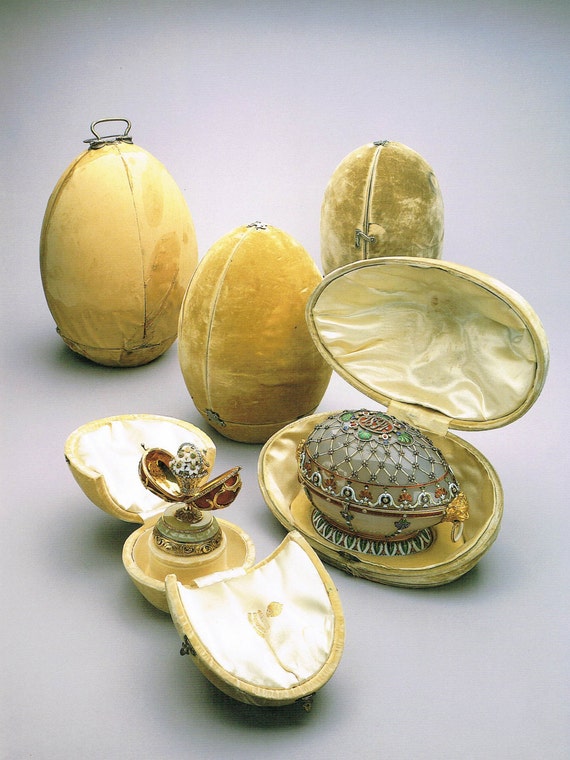
Комментариев нет:
Отправить комментарий